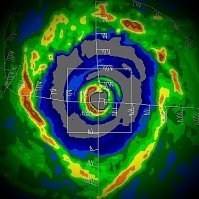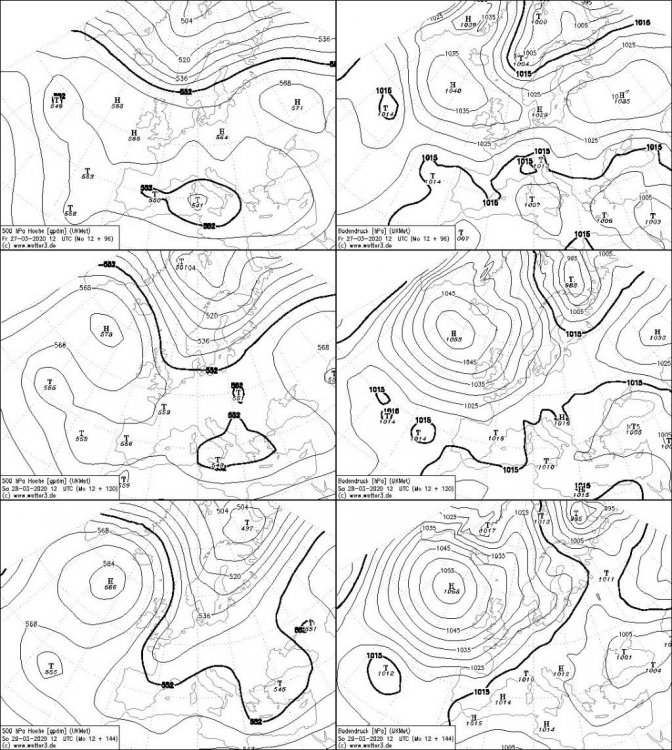-
Posts
4,716 -
Joined
-
Last visited
Content Type
Profiles
Blogs
Forums
American Weather
Media Demo
Store
Gallery
Everything posted by Windspeed
-
I agree with the whole trying to forecast a similar setup or expect another 4/27. Too many variables need to be dead nuts for that to occur. I seem to recall that 4/27 could have been even worse over the central Valley had the bulk of early onset precip along the warm front not lingered west of Knoxville. But by the time the outbreak had started, instability went nuts over the eastern Valley with warm southerly flow and it didn't matter there. Hence all the long-track tornadoes into the Chattanooga area to SWVA. That was an insane setup all for bad luck for the folks involved. Having said this, we may still be in for a bad outbreak Sunday.
-
Latest ENSO NMME forecast courtesy of@jaxjagman
-
Quick discussion about a possible secondary boundary setting up SW of the current MCS complex (currently moving through EKY->SWVA->TriCities) over portions of ETN Valley later tonight when the main event rolls through. Could that add to the dynamics in play for some brief QLCS spinups?
-
Bad timing perhaps. Harold's latest ERC looks to have completed and some reintensification may underway just before landfall on Kadavu Island:
-
Harold's core just missed greater Fiji to the SW. But Kadavu Island (pop.~10k) will take a direct hit. Images/gif courtesy of Brian McNoldy @ University of Miami RSMAS: http://bmcnoldy.rsmas.miami.edu/tropics/harold20/Harold_7-8Apr20_nadi.gif
-
Round one tomorrow evening/night..
-
And of course the one we've been watching for: The trough/phase dynamics at play, leading to a potential outbreak on Easter Sunday. This might be a doozy:
-
Possible severe on Wed evening into Thurs AM?
-
Incredible recovery by Extreme TC Harold from land interaction over Espiritu Santo, Vanuatu. This is a textbook study right here before our eyes. I've never seen anything like this previous.
-
Extreme TC Harold has made landfall over the southern periphery of the island of Espiritu Santo, Vanuatu. Fortunately this region is not as populated as the northeastern region of that large island. Whoever is there is likely getting rocked however. Nice presentation through landfall. The eyewall was strong even if old cloud debris from the ERC was still clearing out within the new eye. Will be interesting to see how much land interaction influences weakening. I suspect there will be some weakening as Harold continues ESE.
-
-
FWIW, I've read data ingestion for the major models is being affected by a lack of global flights. I do not know how accurate this is or, if an issue, how wacky mid-to-long range modeling will become as we go forward the next month.
-
Cyclone Harold is rapidly intensifying and will likely make a direct landfall in Vanuatu as a powerful upper category cyclone in the coming days. Which island that will be still remains in question but there may be multiple landfalls based on the general forecast path.
-
Seasonal forecasts are beginning to make their way out from respected scientists in the field to media and news outlets. The majority of specialists are predicting a hurricane season with above-normal activity. ENSO looks to be swinging neutral to perhaps even a La Niña by July-September. Western Atlantic subtropical and tropical SSTs are running above average overall with some particularly noticeable 2-3°+C deviations in the GOM and W. Caribbean. Could 2020 be hyperactive? AMO and NAO may present both favorable patterns for not only hurricanes in the MDR, but potential land threats to the W. Caribbean and GOM as well this season. Bermuda-Azores ridging may also dominate the SER/WAR steering pattern during Cape Verde season. This might be a year where we even see a few long-trackers reach Central America.
-
Oh if only this pattern had been in place a few months ago. Insult to injury I suppose. Now just wanting this to break fast and we can get on with Spring.
-
-NAO incoming? Some of the globals are hinting into next week but there is clearly an NAO influencing beast near Iceland showing up in the recent ECMWF and Ukie runs. The 12z Ukie is nuts. 1058hpa and 600dm vacuum buster incoming.. Edit: Will be interesting to see if this shifts and locks down into a classic Greenland block or splits anticyclonically into a +NAO/N. Euro block. Therefore, I may've been a wee bit premature. I suppose -NAO isn't necessarily a sure thing.






